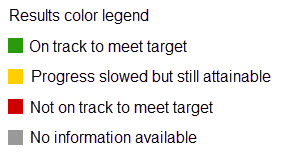Voluntary Speed Compliance
Desired Result: Above Target

Analysis of Performance
- This metric is measured monthly and quarterly, the most recent data available is December 2023
- The source of this data is from a third-party vendor for both mobile photo radar cameras and red light cameras; frequency for updating the data is dependent on their timeline
- This metric represents the percentage of vehicles monitored by the photo radar system in the 30 mph zones that comply with the posted speed limit.
- This metric is impacted by several factors including the amount of staff time devoted to photo radar, weather conditions, locations where it is deployed, the number of days it is deployed, and the number of vehicles monitored.
- We’re seeing only a small fluctuation in the compliance for Aug-Oct; this is common and can be from a variety of factors, one of which is that we tend to deploy the vehicles to areas where there are complaints or consistent violations. This will always keep the compliance numbers fluctuating month to month.
- These numbers are up slightly from May, June, and July which could be due to the addition of two new vehicle operators and more visible enforcement.
Metric Definition
This monthly metric (averaged by quarter) measures speed compliance to 30 mph zones throughout the city. Speeding through neighborhoods can be a quality of life issue for many. Fort Collins is an outdoor activity centered city, with many of its residents frequently enjoying the outdoors in the neighborhoods. Speeding through neighborhoods, commonly a 30 mph zone, can be of concern, especially if near a school, or an area with many children present. This metric measures the compliance rate to those 30 mph zones, and can assist with identifying areas for education and enforcement efforts.
Why Is This Important?
Compliance helps City services determine needs for education, mitigation, and enforcement to keep users of roadways and bicycle lanes safe. Speed compliance reduces the number and severity of traffic collisions.
City Organization Impact on Performance
High – City impact may be high through targeted education, mitigation, and/or enforcement efforts. This can be demonstrated through past practices and is a clear duty of government.
Benchmark Information
Benchmarking in process. There are no currently identified benchmark cities with the same design/challenges that would be illustrative of high/low performance, though we are seeking some. Every city has a unique make-up of roadways, posted speeds, businesses, population, and much more.